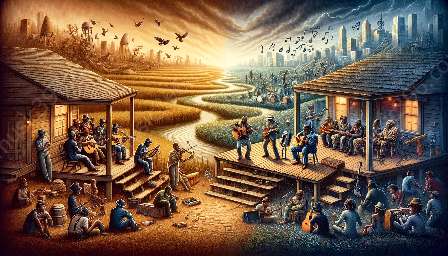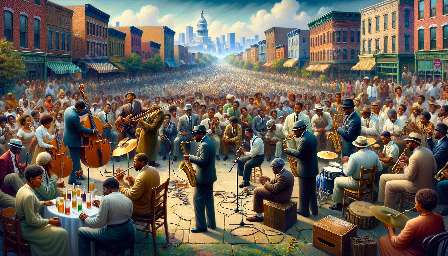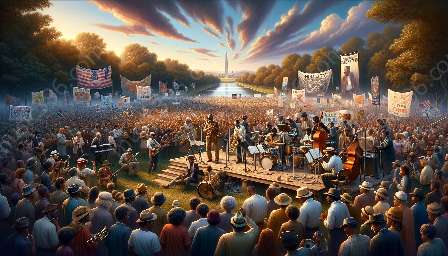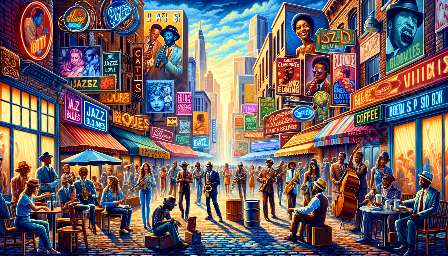For decades, jazz and blues have captivated audiences with their emotionally charged melodies and infectious rhythms. These genres have deep roots in American history, drawing from diverse cultural influences and evolving over time to become powerful forms of musical expression. To understand the evolution of jazz and blues, it is essential to explore the ethnomusicology of these genres, examining their cultural significance and the societal forces that shaped their development.
The Roots of Jazz and Blues
Jazz and blues emerged in the late 19th and early 20th centuries, originating in African American communities in the southern United States. The musical traditions of West African slaves, combined with European musical elements, gave rise to the distinct sounds of jazz and blues. The rhythms and improvisational style of jazz and the soulful, heartfelt expression of blues reflected the experiences of African Americans, serving as a medium for transmitting their cultural identity and struggles.
Early Influences and Innovations
During the early stages of their development, jazz and blues were heavily influenced by spirituals, work songs, and field hollers, which were integral to the daily lives of African American communities. As these musical forms gained popularity, they began to incorporate elements from ragtime, a precursor to jazz, and the call-and-response structure of gospel music.
Blues, with its raw emotional power and distinctive 12-bar structure, served as a foundation for the evolution of jazz. Musicians such as W.C. Handy and Ma Rainey played pivotal roles in popularizing the blues and setting the stage for the genre's future evolution.
The Jazz Age: A Time of Innovation
The 1920s marked the beginning of the Jazz Age, a period characterized by social and cultural upheaval. Jazz became the soundtrack of the Roaring Twenties, with its energetic and syncopated rhythms reflecting the exuberance and rebellion of the era. Innovators like Louis Armstrong, Duke Ellington, and Bessie Smith pushed the boundaries of jazz, exploring new harmonic structures and improvisational techniques.
Jazz continued to evolve, branching into various subgenres such as swing, bebop, and cool jazz, with each style reflecting the unique artistic vision of its creators. Ethnomusicologists played a vital role in documenting and analyzing these developments, providing valuable insights into the cultural and historical contexts that shaped jazz music.
Blues: From the Delta to Modern Times
While jazz was thriving in urban centers, the blues remained deeply rooted in the rural landscapes of the American South. The Delta blues, characterized by its haunting guitar riffs and poignant lyrics, captured the essence of the hardships faced by African Americans in the post-Reconstruction era.
As the Great Migration brought African Americans to northern cities, the blues took on new forms, spawning styles like Chicago blues and electric blues. Artists like Muddy Waters, Howlin' Wolf, and B.B. King electrified the blues, infusing it with amplified instruments and a more urban sensibility. Ethnomusicologists studied these regional variations, shedding light on the impact of geographical and cultural factors on the evolution of blues music.
Revival and Global Influence
In the mid-20th century, a blues revival swept through the United States and abroad, sparking renewed interest in this influential genre. Musicians such as Eric Clapton, the Rolling Stones, and Led Zeppelin drew inspiration from the blues, introducing it to a new generation of listeners and expanding its reach across international borders.
Simultaneously, jazz underwent a period of experimentation and fusion, as artists embraced elements of rock, funk, and world music. Ethnomusicology played a crucial role in documenting these cross-cultural interactions, highlighting the interplay between jazz and global musical traditions.
Ethnomusicology of Jazz and Blues
At the intersection of musicology and anthropology, ethnomusicology provides a holistic approach to understanding jazz and blues. Ethnomusicologists examine the social, cultural, and historical contexts of these genres, uncovering the intricate web of influences that have contributed to their evolution.
Cultural Significance
By delving into the ethnomusicology of jazz and blues, scholars gain valuable insights into the cultural significance of these genres within the African American community and beyond. From the role of music in religious and secular contexts to its impact on identity formation and resistance against oppression, ethnomusicology offers a lens through which to appreciate the profound cultural resonance of jazz and blues.
Transnational Perspectives
Furthermore, ethnomusicology illuminates the transnational dimensions of jazz and blues, tracing their global circulation and influence. Through fieldwork and archival research, ethnomusicologists capture the interconnectedness of musical traditions, revealing how jazz and blues have transcended geographical boundaries to resonate with diverse audiences worldwide.
Archiving and Preservation
Ethnomusicologists play a crucial role in archiving and preserving the rich heritage of jazz and blues. By documenting oral histories, recording performances, and cataloging rare musical artifacts, scholars ensure that the legacy of these genres endures for future generations.
Conclusion: A Living Legacy
The evolution of jazz and blues reflects a dynamic tapestry of cultural exchange, innovation, and resilience. As ethnomusicologists continue to delve into the deep roots and far-reaching branches of these genres, they illuminate the enduring impact of jazz and blues on our collective musical heritage.






























